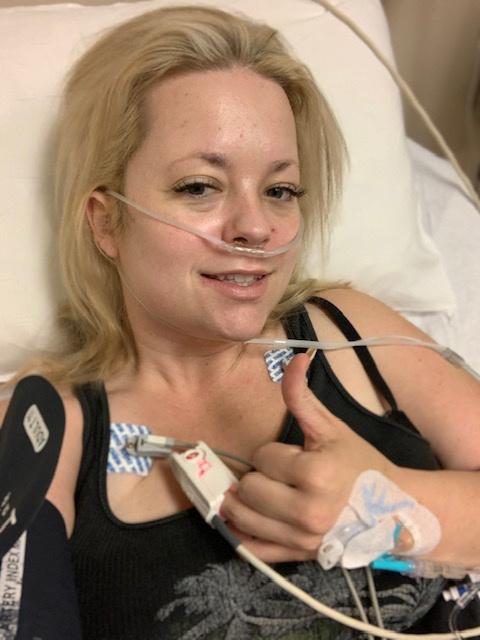
6 minute read
A Journey to find Post-Traumatic Stress relief.
For many of us, the transition from the military to civilian life can be a difficult one.
Too often, reminders we would rather not have from our military service follow us long after our time in service is finished.
Advertisement
The quest for “the new normal” begins while trying to manage old hurts, both physical and mental, in addition to our daily lives.
I am one of those veterans and this is my journey to real post-traumatic stress disorder relief.
As a result of my PTSD chronic pain, muscle loss, foot drop, neuropathy and personal frustrations with the Veteran Affairs system
I have made it my personal aim to research alternative medical treatments that deviate from the “tried and true” standard treatments.
After my divorce, I was at a point where I absolutely needed to find a way to manage my PTSD. It was just my daughter and me; she needed me to be better and I did too.
I decided to hit it hard and I reached out to a PTSD expert I knew from my Air Force days, where I worked with him in England as a younger medic and he was someone I looked up to because of his immense medical knowledge. Known to the Special Operations Group as the infamous “Doc Dougherty ” I knew there were not many others who would know more about new, alternative and effective treatments for PTSD because of how closely he worked with it.
He immediately recommended the Stellate Ganglion Block as a possible treatment for my severe PTSD with some pain-relieving properties.
The Stellate Ganglion Block uses a numbing medicine that is injected on each side of the voice box. The injection quiets the sympathetic nervous system, which is responsible for “the fight or flight response. ”
It also helps relieve neuropathic pain, vascular pain, and anxiety; after reading many patients noticed an immediate diminishment of symptoms, I was intrigued. (RTI, 2019).
Could something so simple really have such an effect so quickly?

After polling numerous veterans who reported the rapid diminishment of PTSD symptoms, I had to try it.
The VA referred me to the pain management clinic but much to my dismay, after my initial consultation I was found not to be a good candidate for the SGB; however, I was offered a different modality, known as a ketamine infusion.
I was temporarily crushed. It seemed that the arterial blood clots that ended my military career also disqualified me for what I thought was my one and only chance to finally put a more manageable lid on my PTSD.
Seeing my sudden change in disposition, my doctor explained more about why he felt ketamine infusions would give me similar results I was looking for with the SGB procedure. I still wasn’t sold.
I still grappled with taking a medication that, as far as I knew, was either meant for horses or abused by humans.
At first, I almost didn’t believe he was telling me about a real treatment. He went on to explain that only a few VA pain management clinics provided the treatment, he recommended a fourhour infusion session every six to eight weeks in order to see results similar to the SGB; furthermore, I might experience a sizable diminishment of pain.
It turns out, and much to my relief, these ketamine infusions weren’t just for horses.
The infusion is mixed with an anti-anxiety medication, which should have an immediate effect as well. Wanting relief, I reluctantly agreed to receive the treatment and scheduled my infusion.
Though I was comforted by a nurse, who monitored the whole infusion, imagine being obscenely drunk at the VA while being hooked up to a handful of machines.

Additionally, though not all recipients of the ketamine infusion will, I experienced a small number of psychedelic side effects while receiving the infusion. *
Thankfully, my nurse took good care of me, ensured I felt safe and when the treatment finished, she guided my wheelchair with ease to the curbside where my friend was waiting.
I was informed I would not be allowed to drive or work for the rest of the day, which sounds fun, but I would come to find out that wasn’t and the side effects of the infusion would take several hours to abate.
Though I must admit, I immediately noticed a drastic decrease in pain, a rare luxury, and noticed a decrease in my normal level of anxiety. The next day it was even better!
The next day I noticed a drastic improvement in my PTSD symptoms, especially the flashbacks I normally experience while driving.
The pain relief lasted for almost a month, far better than I expected. Best of all, I felt I could manage my anxiety better compared to past treatments and medications.
Finally, the benefits outweighed the side effects and the antianxiety effects lasted six-weeks for me. For more than three years, I have managed my PTSD and anxiety with ketamine infusions.
During that time, I found my PTSD is much easier to manage and I am able to better side-step my anxiety, as long as I maintain consistent intervals between treatments.
However, when I wait too long my body and my mind notice, which is a good reminder why I do the infusions and how much it has helped me conquer my daily life.
Never would I have thought that a treatment I didn’t even think was real would be what helped me find relief and diminishment from my pain, PTSD symptoms, and anxiety.
As inconvenient as it is to miss a day of work for treatments, I no longer suffer from my PTSDinduced daily sob sessions on my drive home from work, nor am I in so much pain that I uncontrollably shake.
Continuing to research and being willing to try new treatments made me realize how important self-advocating was critical to achieving overall wellness.
I am thankful each day that I am no longer my long-suffering self and that I continue to become healthier.
If you are suffering...
If you are suffering, I encourage you to be your own best advocate, which means something different for each person.
Perhaps that will encourage you to have candid conversations with your care team or family and firked, or seek out new treatments.
I’m glad I refused to continue suffering in my pain both mentally and physically.
*Pro-tip: If your care team decides this is the right treatment for you, I highly recommend a calming playlist to listen to while you are completing your infusion. Some of my favorite artists I listen to while I do my infusions are Lindsey Stirling and Lana Del Ray.
Here are some additional links regarding Ketamine Infusions that I found helpful. https://www.psychiatryadvisor.com/home/topics/anxiety/ketamine-a-promising-noveltherapy-for-anxiety-and-ptsd/
https://www.hsrd.research.va.gov/for_researchers/cyber_seminars/archives/2354-notes.pdf
https://apps.dtic.mil/sti/pdfs/ADA620363.pdf
RTI.org https://www.rti.org/news/new-treatment-ptsd-shows-promise-clinical-trial
Brandi Pett
U S A I R F O R C E

I am a medically retired USAF staff sergeant. Before I became my biggest patient I was a medic, EMT Instructor, CPR Instructor, and CPR Instructor Trainer. I am a single mama, and currently MVA’s 2020 Hot Mama of the Year Award winner.










